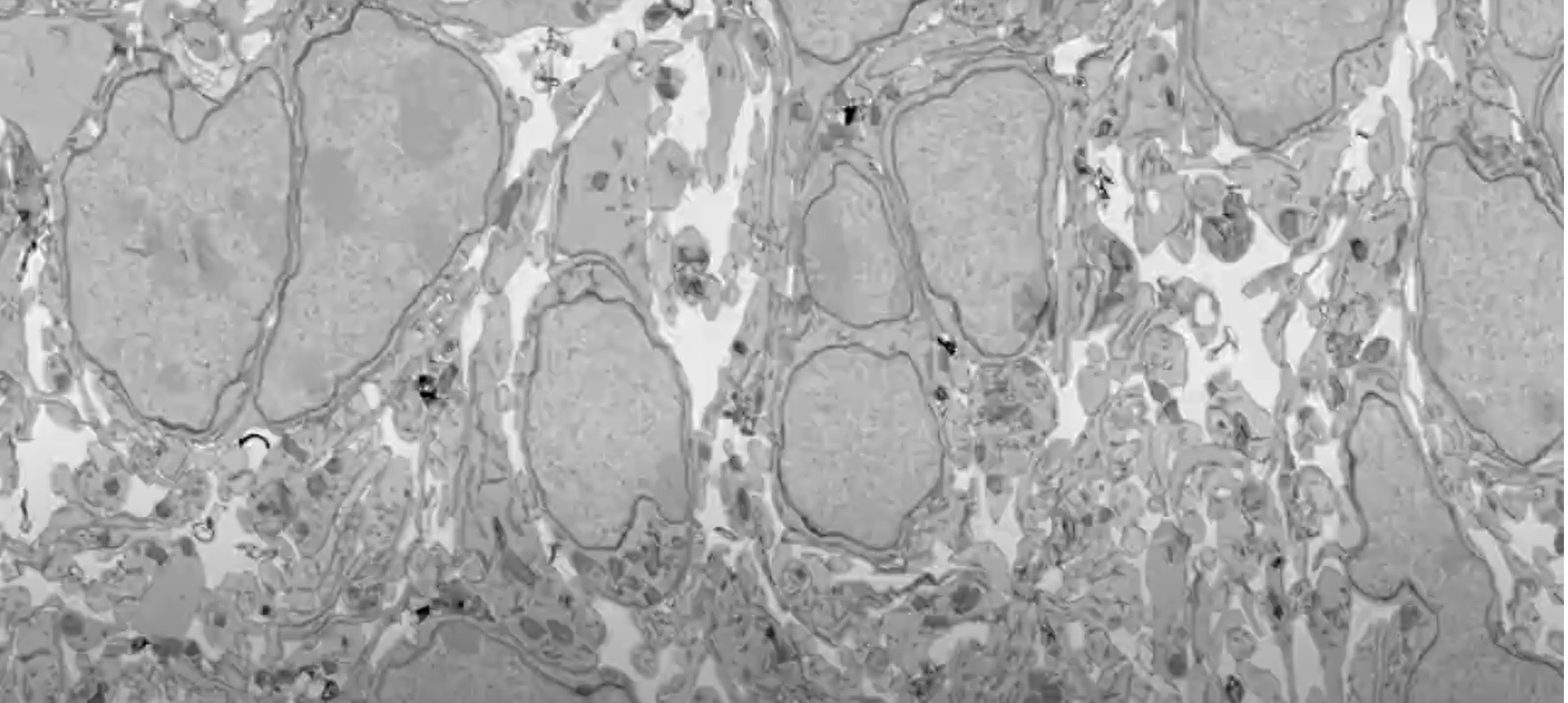We reach more than 65,000 registered users in Dec!! Register Now

IDENTIFICATION OF TUNNELS CONNECTING NEURONS IN THE DEVELOPING BRAIN
- April 27, 2023
- 18 Views
- 0 Likes
- 0 Comment
In 2009, Chiara Zurzolo's team (Membrane Traffic and Pathogenesis Unit at the Institut Pasteur) identified a novel mechanism for direct communication between neuronal cells in culture via nanoscopic tunnels, known as tunneling nanotubes. These are involved in the spread of various toxic proteins that accumulate in the brain during neurodegenerative diseases. Nanotubes may therefore be a suitable target for the treatment of these diseases or cancers, where they are also present.
In this new study, the researchers discovered nanoscopic tunnels that connect precursor cells in the brain, more specifically the cerebellum – an area that develops after birth and is important for making postural adjustments to maintain balance – as they mature into neurons. These tunnels, although similar in size, vary in shape from one to another: some contain branches while others don’t, some are enveloped by the cells they connect while others are exposed to their local environment. The authors believe these intercellular connections (ICs) may enable the exchange of molecules that help pre-neuronal cells physically migrate across various layers and reach their final destination as the brain develops.
Intriguingly, ICs share anatomical similarities with bridges formed when cells finish dividing. "ICs could derive from cellular division but persist during cell migration, so this study could shed light on the mechanisms allowing coordination between cell division and migration implicated in brain development. On the other hand, ICs established between cells post mitotically could allow direct exchange between cells beyond the usual synaptic connections, representing a revolution in our understanding of brain connectivity. We show that there are not only synapses allowing communication between cells in the brain, there are also nanotubes," says Dr. Zurzolo, senior author and head of the Membrane Traffic and Pathogenesis Unit (Institut Pasteur/CNRS).
3D volume rendering of a developing mouse cerebellum reconstructed by serial-section scanning electron microscopy. Example of 3D imaging of segmented granule cells shown in green and orange, with nuclei in blue and purple respectively, and mitochondria in yellow. A thin connection can be seen between the two cells in blue, with subcompartments attached to the tube containing the mitochondria, shown in pink. © Diego Cordero / Membrane Traffic and Pathogenesis Unit, Institut Pasteur
To achieve these discoveries, the researchers used a three-dimensional (3D) electron microscopy method and brain cells from mouse models to study how the brain regions communicate between each other. Very high resolution neural network maps could thus be reconstructed. The 3D cerebellum volume produced and used for the study contains over 2,000 cells. "If you really want to understand how cells behave in a three-dimensional environment, and map the location and distribution of these tunnels, you have to reconstruct an entire ecosystem of the brain, which requires extraordinary effort with twenty or so people involved over 4 years," said the article's first author Diego Cordero.
To meet the challenges of working with the wide range of cell types the brain contains, the authors used an AI tool to automatically distinguish cortical layers. Furthermore, they developed an open-source program called CellWalker to characterize morphological features of 3D segments. The tissue block was reconstructed from brain section images. This program being made freely available will enable scientists to quickly and easily analyze the complex anatomical information embedded in these types of microscope images.
The next step will be to identify the biological function of these cellular tunnels to understand their role in the development of the central nervous system and in other brain regions, and their function in communication between brain cells in neurodegenerative diseases and cancers. The computational tools developed will be made available to other research teams around the globe.
List of Referenes
- Diégo Cordero Cervantes, Harshavardhan Khare, Alyssa Michelle Wilson, Nathaly Dongo Mendoza, Orfane Coulon-Mahdi, Jeff William Lichtman, Chiara Zurzolo. 3D reconstruction of the cerebellar germinal layer reveals tunneling connections between developing granule cells. Science Advances, 2023; 9 (14) DOI: 10.1126/sciadv.adf3471
Cite This Article as
No tags found for this post









